Cucumbers are a popular target for pests, which can quickly ruin a healthy harvest. If you’ve noticed your cucumber plants being eaten by mysterious critters, you’re not alone.
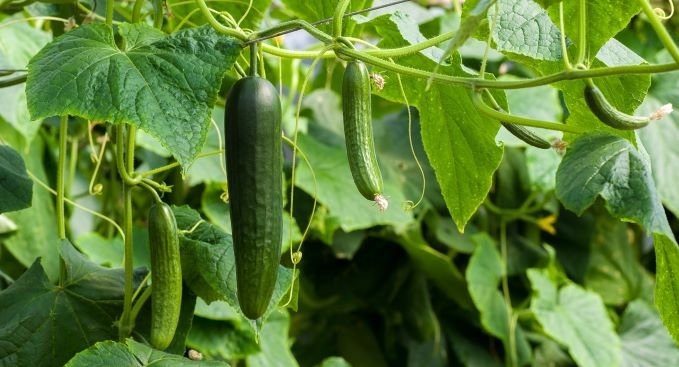
The most common pests eating your cucumbers are cucumber beetles, aphids, cutworms, squash bugs, spider mites, whiteflies, and cabbage loopers.
Luckily, we know how to handle cucumber pests. Read on to find out what pests are eating your cucumbers and how to get rid of them.
Related: Why Cucumbers are Burpless | Reason Why Cucumbers Turn Yellow
Table of Contents
1. Cucumber Beetles
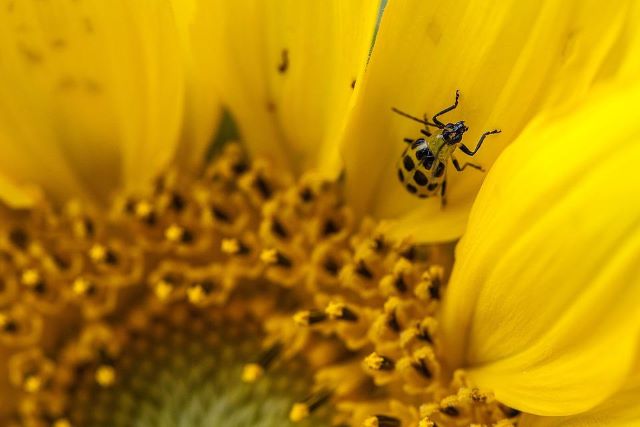
If you notice the growth of your cucumber plants is stunted or wilted and there are holes accompanied by yellowing, cucumber beetles are the most likely cause. Cucumber beetles are a type of pest that commonly attack cucumber plants and other plants in the cucurbit family, such as melons.
Two types of cucumber beetles could be munching on your cucumber plants, the spotted cucumber beetle and the striped cucumber beetle. Both types of beetle are about ⅕ of an inch long when they are adults. The larvae of both beetles are white with a dark head and three sets of legs on a worm-like body.
The striped cucumber beetle has a yellow body with thick black stripes. The spotted cucumber beetle also has a yellow body and twelve black spots.
The larvae of cucumber beetles feed on your cucumber plant’s roots, usually killing seedlings as they emerge. The adults feed on your cucumber leaves and fruit which can be quite damaging. This pest can reduce the number of fruit your cucumber plant will bear, as well as damage the fruit that is forming. Additionally, these pests can spread bacterial wilt.
How to Get Rid of Cucumber Beetles
One of the first things to do if you spot the yellow-bodied cucumber beetle on your plant is to knock it off. Once they are on the ground, pick them up and remove them from your garden. They are tricky to pick up so I would suggest having a cardboard box under your plant before you try this.
Another way you can get rid of cucumber beetles is by applying neem oil to your plants.
To protect your seedlings from cucumber beetles, cover them with floating row covers. Additionally, remove any weeds and garden refuse from your garden as that is where cucumber beetles like to overwinter.
2. Aphids
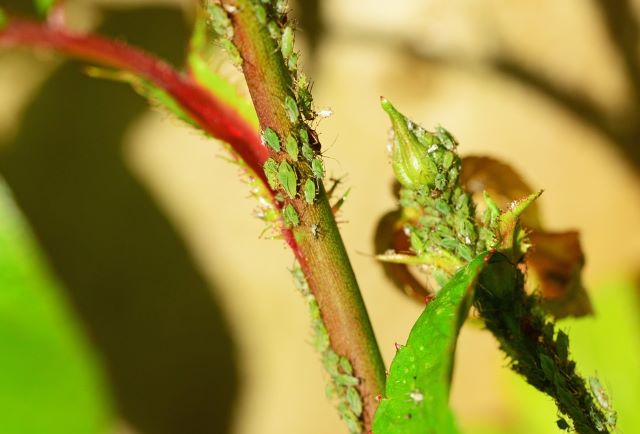
Ah, aphids, the thorn in the side of every home gardener. Aphids are tiny, white, green, or black, soft-bodied insects that can be found in large numbers on the leaves and stems of cucumber plants.
Aphids feed on the sap of your cucumber plant and produce a sticky substance called honeydew that attracts other insects and can cause powdery mildew. Signs that your cucumber plant has an aphid infestation are yellowing leaves that will eventually drop off.
An aphid infestation, if large enough, can cause the growth of the cucumber plants to be stunted and for the fruit to be smaller or even misshapen. Aphids are particularly devastating to cucumbers because they carry the cucumber mosaic virus.
If you think you have aphids, take a look at the underside of your leaves, you will see a clump of tiny insects there.
How to Get Rid of Aphids
If you have spotted aphids congregating on the underside of your cucumber plant leaves, grab the garden hose. Blasting the leaves gently with the garden hose will dislodge most of the aphids but not all. If it is a particularly bad infestation, the garden hose will not remove all of them.
Next, if there are not too many, wipe away the remaining insects from the leaves using a damp paper towel. I realize wiping bugs off your plants may not be the way you would like to spend your time but trust me, it works!
Once you have removed the insects, spray your cucumber plants with a mixture of dishwashing soap and water or you can use insecticidal soap which is safe to use in organic gardening. Cucumber plants are extremely sensitive to pesticides.
3. Cutworms
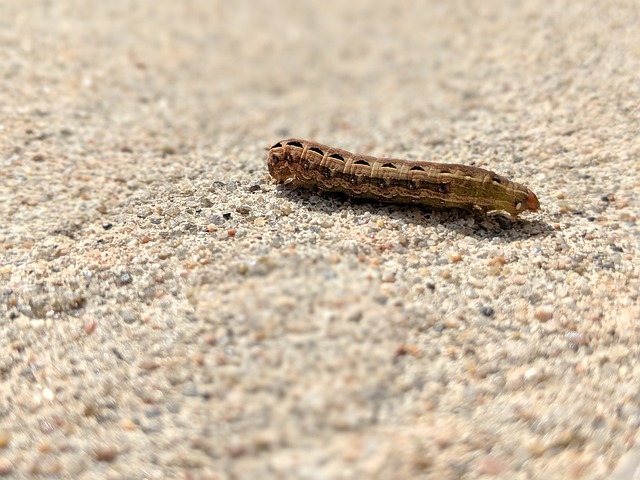
Cutworms are a particularly devastating cucumber pest because of how quickly they can devour your plant. Cutworms can eat their way through a cucumber plant in one night!
Cutworms are caterpillars and are the larva of nocturnal moths. They range in color from brown to light gray and are usually around 2 inches. You can find cutworms underneath the soil by the stem of your cucumber plant.
And cutworms just love to feast on young cucumber seedlings! Munching on the stem, cutting it off at the ground, and killing the cucumber plant. The larvae will also feed on adult cucumber stems and like to feed on your cucumber fruit.
If you think cutworms are using your cucumber plants as an all-you-can-eat buffet, you can check by digging in the soil around your plants. Cutworms will be visible in the soil, curled up and fast asleep.
This caterpillar is nocturnal so the best way to spot them is to grab your torch and head into your garden after dark where you will catch them devouring your plants.
How to Get Rid of Cutworms
Once you have identified that you have a cutworm problem, there are several different ways you can stop them from eating your cucumber plants. One way to deal with the problem is to remove the cutworms by hand at night. However, removing squishy caterpillars from your cucumber plants in the dark is not something everybody may want to do, including me.
Other than removing cutworms by hand, you can apply horticultural neem oil to your cucumber plants. Apply the oil at night, and it should kill the cutworms.
Another way to keep cutworms from eating your cucumber plants is to surround your plants with diatomaceous earth. The cutworms can’t cross it. Alternatively, if you only have a few cucumber plants, you can place a protective collar around your plant’s stems using aluminum foil.
4. Squash Bugs
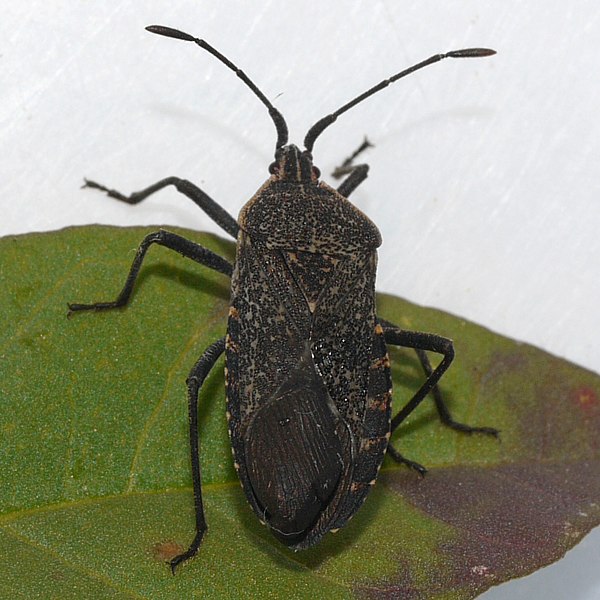
Image: Source
While squash bugs are named for their affinity for squash plants, they also target cucumber plants. You will notice small white spots on the leaves if this common veggie patch menace is eating your cucumber plants. Your cucumber plant leaves will begin to yellow and will eventually die.
Squash bugs feed on the sap of your plants, similar to aphids, except they inject a toxin into your plants while they eat. Adult squash bugs measure over ½ an inch long and have a shield-like shaped brownish-gray body.
How to Get Rid of Squash Bugs
These pests are rather easy to spot and so when you do see them pick them off your plants. You can treat a squash bug problem the same way you would an aphid infestation. These pests, like so many others, spend the winter months in garden refuse, so it is important to keep your garden clear of all rubbish.
5. Spider Mites
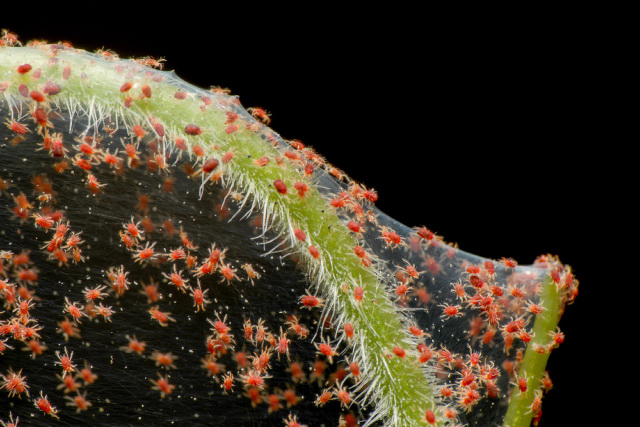
Spider mites are teeny tiny members of the arachnid family that love to munch on cucumber plants. Spider mites can be found on the underside of your plant leaves, where they feed on the individual cells of your plant’s leaves.
Their feeding habits produce red and yellow spots on the underside of your cucumber plant leaves initially. Eventually, the spots will cover the whole leaf and the infestation will stunt your plant’s growth. These pests are usually reddish brown and very difficult to spot because of their miniscule size.
How to Get Rid of Spider Mites
Spider mites thrive in hot and dry conditions, so keeping your cucumber plants well-hydrated will keep the spider mites from eating your plants.
If you do manage to spot these tiny arachnids, you can remove them from your cucumber plant leaves using a damp cloth or spray them off with water. Failing this, you can use a neem oil spray.
6. Whiteflies
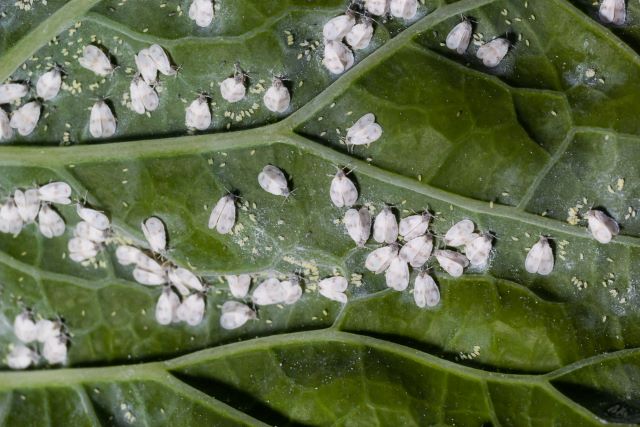
Whiteflies are a common garden pest that likes to feed on your cucumber plants. If you notice that your cucumber plant’s growth is stunted and it has developed a sooty mold, you need to check the underside of your leaves.
Whiteflies are small, measuring about 1/10 of an inch long, and resemble tiny white moths. They like to hang out on the underside of your cucumber plant leaves, where they suck the sap out of them. Like aphids, whiteflies produce honeydew, which causes several damaging diseases to develop.
How to Get Rid of Whiteflies
Whiteflies can be hard to spot because they can fly. The best way to get rid of whiteflies is to spray your cucumber plants with neem oil. To protect your plants from whiteflies you can cover them with floating row covers.
7. Cabbage Loopers
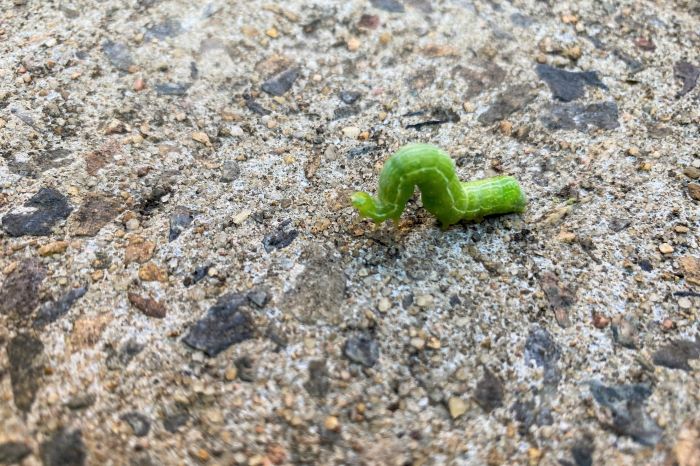
If you have noticed your cucumber is rapidly losing its leaves, is not producing many cucumbers, and appears weakened, cabbage loopers may be to blame. These smooth-skinned green caterpillars are the larvae of moths that lay their eggs on the leaves of your cucumber plants.
You can identify cabbage loopers by the unique way they curl or loop their body as they move across your plants. The pale green caterpillars have a white stripe along each side of their body, with several fine lines down their back.
How to Get Rid of Cabbage Loopers
If you think cabbage loopers are destroying your cucumber plants, you will need to inspect your plants. Remove any caterpillars that you see, and destroy any eggs which can be found on the top or bottom leaves of your plants. You should also remove any of the damaged leaves.
One of the best defenses against cabbage loopers is parasitic wasps. You can encourage these wasps to visit your garden by planting thyme or dill. Alternatively, you can cover your plants in floating row covers to protect them and lastly, you can use an insecticide safe for organic gardening if the problem does not resolve by other methods.
Related Reading:
